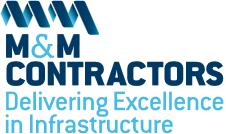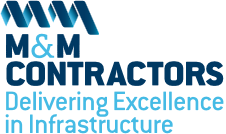REPORT
-
Site conducted
-
Conducted on
-
Prepared by
-
Location
-
Site Team
SITE DOCUMENTATION
-
Are signing in arrangements in place?
-
Are induction arrangements in place and suitable and sufficient. Do they cover asbestos where required?
-
Are all statutory notices displayed on site?
-
Is a Construction Phase Plan (CPP) present on site and suitably developed and continuously updated? HSP for ROI
-
Are there suitable and sufficient Risk Assessments/Method Statements (RAMS) for the activities on site?
-
Are Risk Assessments/Method Statements (RAMS) being communicated and signed by operatives?
-
Are COSHH Risk Assessments available for substances being used on site? (Not only safety data sheets).
WELFARE/FIRST AID/RIDDOR
-
Are there adequate toilet facilities available on site including hot and cold running water and hand washing facilities?
-
Are there adequate mess/canteen facilities available on site?
-
Are adequate processes in place for drying hands, disposing ofbwaste (bins provided) and mess areas including toilets cleaned frequently?
-
Are adequate drying facilities available on site?
-
Is there a designated first aider on site?
-
Is the first aid kit adequate and fully stocked including eye wash?
-
Is first aid signage on display and filled in?
-
Have there been any RIDDOR incidents on site, have there beenany incidents/accidents/near misses on site and relevant actions undertaken?
FIRE PRECAUTIONS/EMERGENCY PROCEDURES
-
Is Site Fire Safety Plan displayed?
-
Are there an adequate number of suitable fire points with test and in date fire extinguishers throughout the site including in offices/welfare area?
-
Is a Fire Marshal(s) appointed?
-
Is emergency lighting provided on escape routes/site areas? (Where required).
-
Is an adequate means of escape present with clear exit routes and fire signage established for exit routes, final exits, etc.?
-
Are hot works permits being issued?
-
Is there a method of raising the alarm for the entire site that is audible above working noise from each call point, including roof level, basement level, etc.? (If applicable).
PROTECTION EQUIPMENT (PPE)
-
Is the site, or areas of the site, designated as a ‘hard hat’ area(s) and are safety helmets being worn?
-
Is high visibility clothing being worn where required by site rules and in areas where vehicular/plant movement is taking place?
-
Is safety footwear being worn by all operatives, visitors, etc.?
-
Is appropriate task specific PPE being worn by operatives?
-
Is adequate signage displayed indicating PPE requirements for the site?
SITE SECURITY/PROTECTION OF PUBLIC/STAFF
-
Is the site suitably secured to prevent unauthorised access?
-
Is there adequate safety related signage at the site entrance(s)?
-
Are precautions to protect the public and client staff in place?
-
Are materials, tools and plant stored away from the public and client staff?
-
Are hoardings/temporary fencing in place? If so, has a temporary works design been prepared considering stability, wind load, etc. Are recorded inspections being completed?
-
Are hoardings adequately sealed and full height from floor to ceiling or, if necessary, are part height with sheeting above up to ceiling/soffit level in order to control dust, etc.
ACCESS/EGRESS/TRAFFIC MANAGEMENT
-
Is personnel access to all areas of the site safe and well controlled?
-
Is a traffic management plan available on site? (If required).
-
Are vehicular access routes clear and separated from pedestrian routes, including crossing points?
-
Is suitable access available to all floors including the provision of temporary staircases?
ELECTRICITY/LIGHTING
-
Site distribution e.g. temporary lighting, cables, transformers, etc. got evidence of PAT?
-
Are electric certificates available for the onsite connection of all temporary mains site distribution, fixed wired transformers, accommodation units, etc.?
-
Are all areas of the site well lit with suitable permanent or temporary lighting?
-
Are all temporary cables positioned in a safe manner and free from damage?
-
Is battery charging undertaken in a controlled manner at designated charging points e.g. signed/protected/segregated areas? (Where practicable).
-
Are safe working arrangements in place for electrical systems e.g. lock off/control of access to equipment/isolators, permits in place/secured and signage displayed on room and apparatus?
SITE TIDINESS/STORAGE
-
Is the site tidy, in good order and free from slip or trip hazards?
-
Are storage areas tidy and well organised?
-
Are skips suitably sited, being emptied regularly and kept adequately secured?
-
Are LPG, flammables and COSHH substances stored correctly with appropriate safety precautions/emergency procedures i.e. Bunded, drip trays, spill kits etc.?
Fixed Scaffolds/Edge Protection:
-
Is a handover certificate available and inspection registers in place, completed by a competent person?
-
Are scaffolds/edge protection present where required and correctly erected/used/dismantled in a safe manner? (Working platforms, guard rails, toe boards, barriers, brick guards if necessary, good access, etc.).
-
Do they have a design or TG20:21 Compliance Sheet?
Mobile Towers/Podiums:
-
Are towers/podiums correctly erected in accordance with the manufacturer’s instructions?
-
Are towers/podiums being used or erected and dismantled in asafe manner? (Brakes applied during use, gates on podiums closed, etc.).
-
Are scaff-tags or other inspection arrangements in place, are they up to date and correct?
Ladders/Stepladders:
-
Is the appropriate classification in use (Class 1, EN131 or EN131 Professional) and in good condition? Note: (Class 3 or EN131 Non – Professional are only suitable for domestic use)
-
Are ladders being used correctly? (Correct angle, length, 3 points of contact, etc.).
-
Does the site operate a permit to work tagging/inspection system for ladder/stepladder use? If so, is it being operated correctly?<br>
Other Work at Height:
-
Are Mobile Elevating Work Platforms (MEWPs) being used in a safe manner and is the equipment appropriate for the environment?
-
Is access equipment suitable for the site and in line with the HSE Hierarchy of Controls?
-
Is safety netting in use and is it suitable and sufficient with evidence of installation/inspection certification/register?
-
Other work at height issues i.e. fall arrest/restraint/harness, rescue plan, rope access, suitable access equipment for the site?
PLANT/MACHINERY/EQUIPMENT
-
Has all plant/lifting equipment received thorough test andexamination certificate or annual inspection and testing available?
-
Have all electric tools and battery chargers been subject to recent Portable Appliance Test (PAT)?
-
Do all electric tools run off 110 volts or less (Lowest form of electrical supply possible)?
-
Does all necessary plant/lifting equipment have evidence of recorded 7 day inspection by a competent person?
-
Is mobile plant fitted with Roll Over Protection System (ROPS), seatbelts, flashing beacons, sounders and 360o visibility devices?
-
Are semi-automatic quick hitch devices present on plant and are safety pins inserted?
-
Are adequate guards/safety attachments on items of plant e.g. chop saws, bench saws, grinders?
-
Have tools been fitted with dust suppression/extraction equipment where necessary? (M Type vacuums as a minimum for cutting operations)
OCCUPATIONAL HEALTH
-
Are dust masks being utilised where applicable, in appropriate condition and type (FFP2/FFP3)?
-
Are wet suppression techniques being used for activities that<br>generate dust?
-
Is appropriate hearing protection provided/being used?
-
Are there any activities which cause significant vibration risks and are they being managed effectively?
-
Are there any activities which involve significant manual handling and are they being managed effectively?
-
Are other occupational health risks present on site and are they being managed effectively?
-
Are noisy or dusty activities being managed effectively in order to eliminate or reduce so far as reasonably practicable any impact on store staff or customers?
-
Is the Principal Contractor taking steps to effectively address mental health and workplace stress e.g. providing information/notices on support services, providing information and training to staff etc?
DEMOLITION/EXCAVATION
-
Is the excavation supported to prevent collapse?
-
Has a temporary works design been prepared for excavation shoring/propping/temporary works?
-
Have plans been made to protect against materials, people and vehicles falling into the excavation?
-
Is consideration given to nearby structures?
-
Have all underground services been identified and are safe digging practices in place?
-
Is there the provision of suitable access and egress from the excavation?
-
Has consideration been made for exhaust fumes within the excavation and ventilation?
-
Has consideration been given to the protection of the public, works fenced off, backfilled during out of site hours, etc.?
-
Have inspections been undertaken prior to start of each shift, is the strength/stability affected; fall of rock, earth or other material and are inspection registers completed?
ASBESTOS ABATEMENT/CONFINED SPACES
-
Are Certificates of Reoccupation/Contractor self certification documentation in place for completed areas of asbestos works?
-
Are Operatives suitably trained and experienced to work within an enclosure?
-
Are asbestos abatement/confined spaces works being completed safely in line with RAMS and/or Plan of Works. Viewing windows or cameras in the enclosure, masks and overalls worn, decontamination units and personal and space monitoring, etc.
-
Is asbestos waste being stored on site and is this in a lockable skip or restricted area which is clearly identified?
-
Is there adequate lighting and emergency lighting within confined space?
-
Is there a communication system in place? (Two way radio).
-
Is there an emergency rescue procedure in place; are operatives wearing harnesses/life lines, etc.?
-
Has any plant in the confined space been isolated to reduce heat stress?
-
Are any hot works being undertaken within the confined space?
TRAINING/COMPETENCE
-
Can operatives evidence holding CSR and Safepass
-
Is evidence available for Site Manager(s) attending a 5 day SMSTS course or equivalent i.e. 3 day Site Safety Plus for Shop Fitters and Interior Contractors, 4 day CSR Site Safety Supervisors (Gold Card) or equivalent relevant to the trade on site i.e. for demolition works a NFDC Demolition Site Manager's card?
-
Does the site First Aider(s) have appropriate training? (Where required).
-
Have the operatives been face fitted for the required type of mask and is there evidence of face fit on site?
-
Is evidence available for ongoing site training (e.g. Toolbox talks) on appropriate topics at regular intervals (this does not necessarily mean weekly)?
-
Are mobile scaffolds/towers erected by competent persons e.g. holders of PASMA certificates?
-
Is safety netting installed by competent contractors ?
-
Do Mobile Elevating Work Platforms (MEWPs)/Scissor lift operatives have IPAF (or similar) training?
-
Are operatives trained in the use of the plant they are using? (Forklift, crane, etc.).
-
Is there evidence that operatives mounting abrasive wheels have been trained?
-
Have operatives received asbestos awareness training? (If applicable).
-
Where temporary works are in place has a Temporary Works Coordinator (TWC) and Temporary Works Supervisor (TWS) been identified? What training/competence is available?
OTHER/COMMENTS
-
Other items to be addressed
















